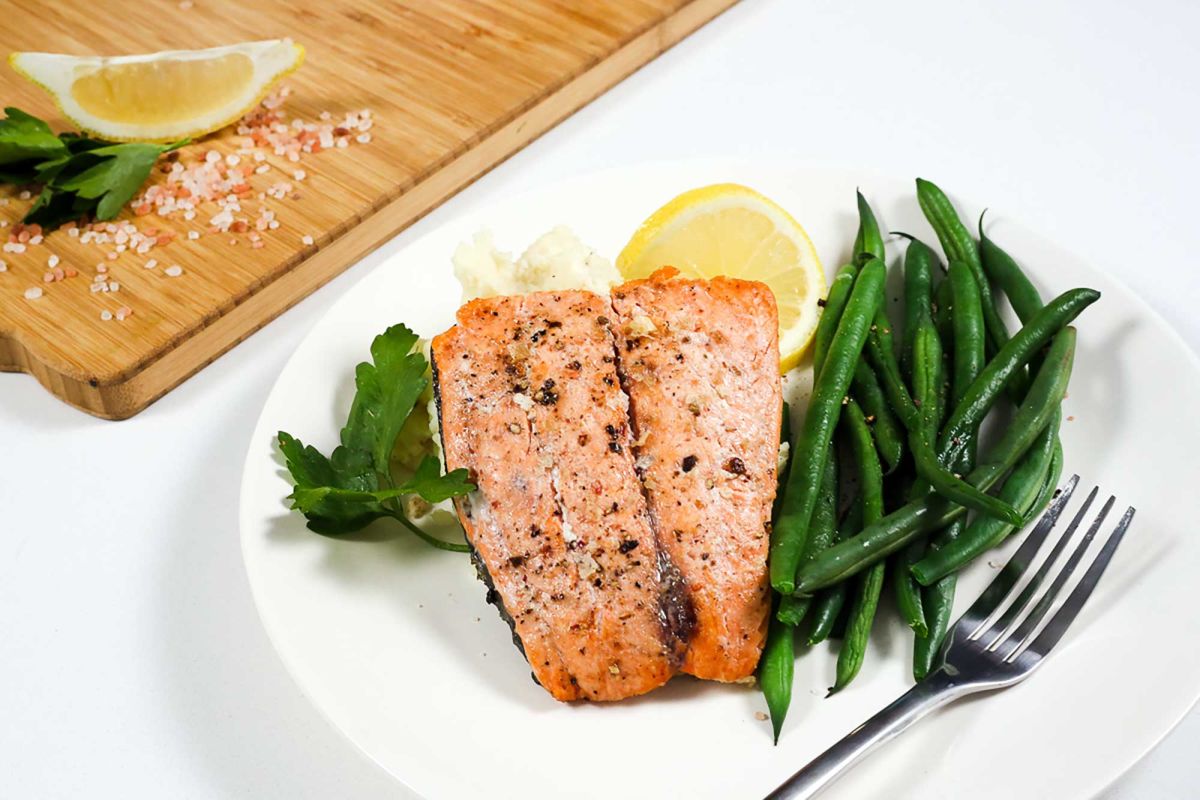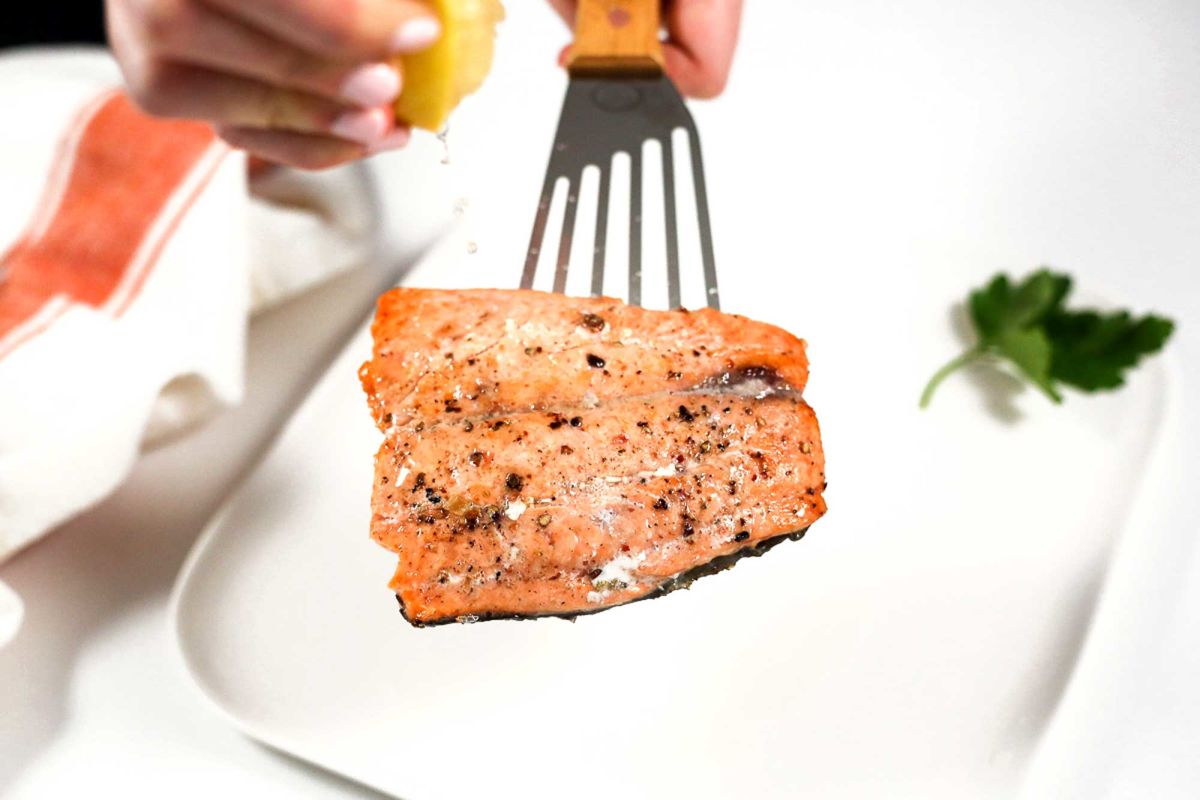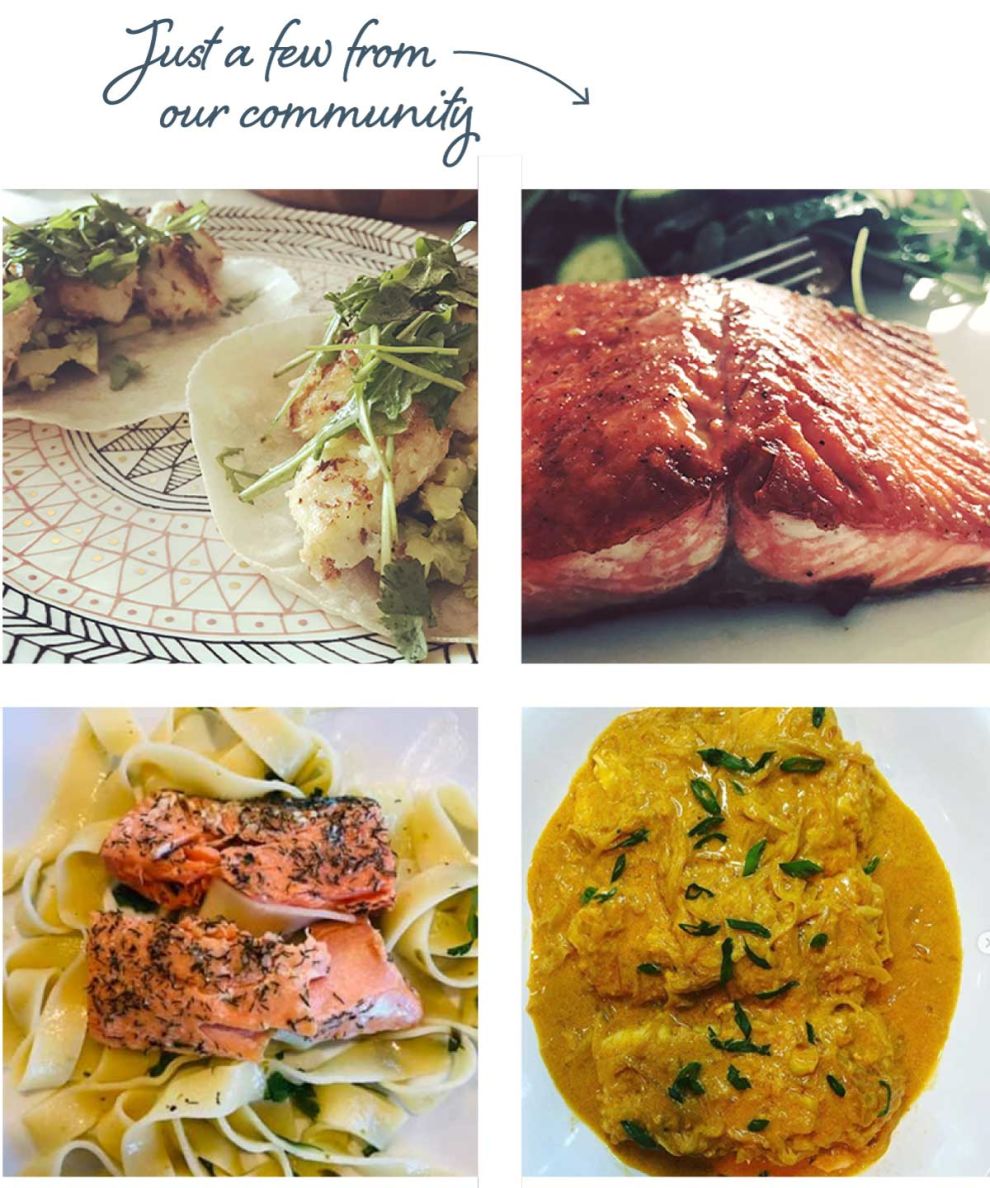Your Guide to a Great Fillet
Everything you need to get started with your Wild Alaskan fish!
Thawing Your Seafood
Safely preserve the quality, texture, and taste of your seafood. We've spoken to many folks who forget this step, and it makes a big difference!
Step 1
Remove packaging
Take your fish out of the vacuum-sealed packaging. Removing the fish from packaging allows excess moisture to drain away, ensuring the best quality, flavor and texture.
Step 2
Place in dish under refrigeration
Once the packaging has been removed, place your fish on a rimmed plate or shallow dish in the fridge for 10-12 hours before cooking.
Since your fish is surrounded by a protective layer of ice, expect a small amount of water to melt off as it thaws. You can line the dish with paper towels or a clean tea towel to absorb excess water, which will help keep the fillet from sitting in moisture as it defrosts. Alternatively, place your fish on an upside down bowl or rack set over your dish to allow any water to drain away.
Cooking Your Seafood
When it comes to cooking wild-caught seafood, no two portions are ever exactly the same. Whether you're already a master chef or just getting started in the kitchen, here's a simple classic we think you'll love:

The Fisherman-Style Fillet
Wild salmon makes for a flavorful, beautiful fillet of fish. You don't need to do much to put an Instagram-worthy meal on the table that looks as good as it tastes. When it comes to this catch, do as the fishermen do in Alaska aboard their vessels and keep your approach to cooking salmon dead simple.
- Bring the portion to room temperature 15-20 minutes before cooking and dry well with paper towels or a clean dish towel.
- Warm a large, non-stick skillet with oil (or butter) over medium-low heat.
- Season fish with salt and pepper.
- Raise heat to medium-high. Place the portion, skin-side up in the pan. Don't touch it. Cook until golden brown on 1 side, about 3 minutes.
- Turn fish over with a spatula, and cook until it feels firm to the touch, but still flaking, and the skin is crisp if desired, about 2-3 minutes more. (The skin can be served or removed with a knife or spoon).
- Transfer to a plate and serve.

Pro Tips From an Alaskan
- Start with room-temperature fillets
This helps fish to cook more evenly. - Dry fillets well
Before cooking, use a paper towel or a clean dish towel to pat each one dry. Any excess moisture will cause fillets to stick and won't give you that crispy skin effect. - Make sure your pan is really hot
Keep the flame around medium to medium-high, but before anything touches the pan, let it get really hot. After, pour in a thin layer of oil and heat until it shimmers. Then add the fish. - Don't overcook it
Keep in mind that wild-caught fish, like other proteins, will continue to cook after taking it off the heat, so don't worry if it looks a tad rare at first; it'll likely be perfect by the time you're ready to feast. - Everyone's stovetop is different
If you do find that your fillet isn't at the doneness you prefer, simply cook it for another minute, skin side down, with the lid on the pan.

Ready to Share?
We want to see what you whip up. Share your culinary creations on Instagram and Facebook by using the hashtag #eatwildalaskan. Have a question? Don't be shy! We always respond, and pretty quickly too. Get in touch by clicking the chat bubble in the bottom right or just email us at [email protected].
Hungry for More?
The Seafood Index
Discover more about the different species and portions of seafood we offer. Everything from where and how it's caught to flavor profiles and nutritional information.
The Wild Alaskan Blog
Curious about finding amazing recipes for your seafood? We have a whole world for you to explore, full of curated and exclusive recipes and tips.